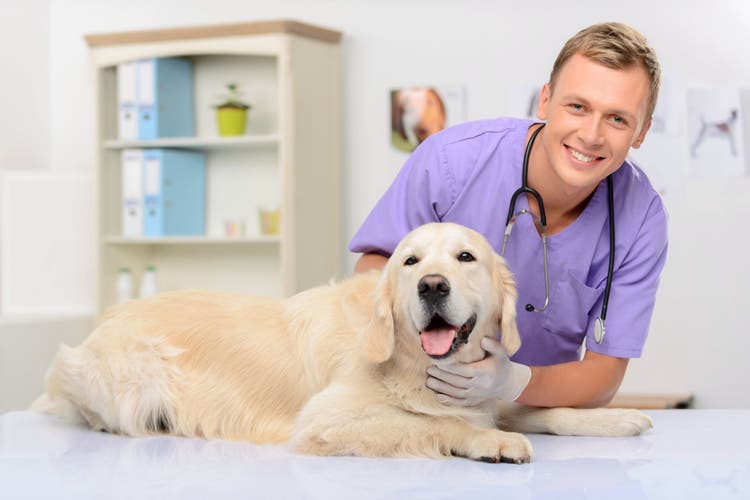
Subcutaneous (SQ or SC) Fluids in Dogs
Understanding Subcutaneous Fluids for Dogs
Everybody needs water, the most important of all nutrients. Humans are lucky; we can usually drink fluids when we need them. But when animals don’t feel well, they stop drinking. During illness, your dog has a greater need for water and can become dehydrated rapidly. In fact, a loss of just 10 percent of body fluid can cause your pet some trouble. It is most important, therefore, that you replace the lost fluids and prevent dehydration.
Fluids can be given in a number of ways. In a hospital setting, intravenous fluids (IV) through an intravenous catheter is the most common method. And in emergency situations, fluids are sometimes administered into the abdominal cavity. Your dog can also receive fluids subcutaneously, in the area just under the skin and on top of the underlying muscle. In dogs with loose skin over their backs this area works well for fluid administration. The advantages of subcutaneous fluids are the ease of administration, convenience and low cost. Most commonly, they are used in home treatment of mild to moderate kidney disease. However, they are not appropriate for treatment of shock or severe dehydration. Subcutaneous fluids are offered reverted to as “Sub-Q fluids” and abbreviated “SQ fluids “or “SC fluids”.
Your dog will probably receive subcutaneous fluids at a veterinary clinic. Then you can take your dog home while the fluids absorb slowly throughout the day. If he needs repeated doses, you can learn to administer subcutaneous fluids at home.
What Type of Fluid Do I Use for My Dog?
Injectable fluids come in various forms, but only a few should be used for subcutaneous administration. Lactated ringers, 0.9% saline, Ringer’s, Normosol-R, and Plasmalyte are most commonly used. Some fluids may contain additives such as potassium chloride. Fluids containing dextrose or sugar solutions should be avoided. These can result in infection at the site of injection or severe skin irritation resulting in possible necrosis (dead tissue).
What Supplies Do I Need?
In order to administer subcutaneous fluid, you will need a bag of fluid, fluid tubing and a needle. The fluid bag and tubing can be used repeatedly but the needle should be changed frequently.
How Do I Give the Subcutaneous Fluids to My Dog?
Subcutaneous fluid administration relies on gravity. Connect the bag to the tubing and suspend the bag from an area above the pet. Attach the needle to the tubing. In order to clear the air out of the tubing, open the clamp and allow the fluid to run through the tubing to the outside.
Once the air is removed, close the clamp. Fluids are usually given in the area between the shoulder blades. Clean the area of the skin you have chosen with alcohol. Pinch the skin and insert the needle into the skin fold. The needle may appear quite large but using a larger needle makes the fluid administration go significantly faster and reduces the time your pet must stay restrained in one area.
Once you have placed the needle correctly, let go of the fold and open the clamp on the tubing. The fluid should begin flowing under the skin. If the fluid is dripping very slowly, reposition the needle.
When fluids have been administered, remove the needle and hold gentle pressure on the site for one or two minutes. You may see some of the fluid leaking out of the needle hole, but this is normal and won’t cause any problems
How Much SQ Fluid Do I Give to My Dog?
The amount of fluid you should give depends upon the severity of dehydration. Your veterinarian will tell you how much fluid to give. Try not to exceed 100 milliliters per site unless directed by your veterinarian. If your pet needs 200 mls of fluid every three days, you should give 100 mls in one area, remove the needle and place the needle a little further down on the back and give the second dose of 100 mls.
If the skin becomes tight, stop giving fluids in that area. If your pet is due for another dose of fluids and you think you can still feel fluids under the skin, do not administer more fluids until you consult with your veterinarian.
With patience and practice, you and your dog can become used to the routine of subcutaneous fluid administration. Your pet will stay comfortable and hydrated without the stress of the veterinary clinic.